High pure 4N-6N Copper Foil/sheet/wire/Stab/Granule
High purity copper refers to the purity of copper metal above 4N (Cu
≥ 99.99%) (N means the purity of copper, the larger the number in front
of N the higher the purity of copper), high purity copper as an emerging
material, in addition to the preparation of high-purity analysis of
standard test materials, electronic industry, a variety of connection
lines, electronic packaging with bonding wire, high-quality audio lines,
integrated circuits, liquid crystal displays, sputtering targets and ion
coating and other high technology It is also an indispensable and
valuable material for the atomic energy, rocket, missile, aviation,
spaceflight and metallurgical industry.
High purity copper is mainly prepared by electrolytic refining method,
zone melting refining method and anion exchange method. Our company can
provide 4N-6N high purity copper, which can be processed into targets,
granules, rods, foils, sheets and other shapes, widely used in
high-purity alloy melting, crystal growth, vacuum coating and other
fields.
High pure 4N-6N
Copper sample specification and price
99.99% (4N) Copper sample
4N Cu sheet sample
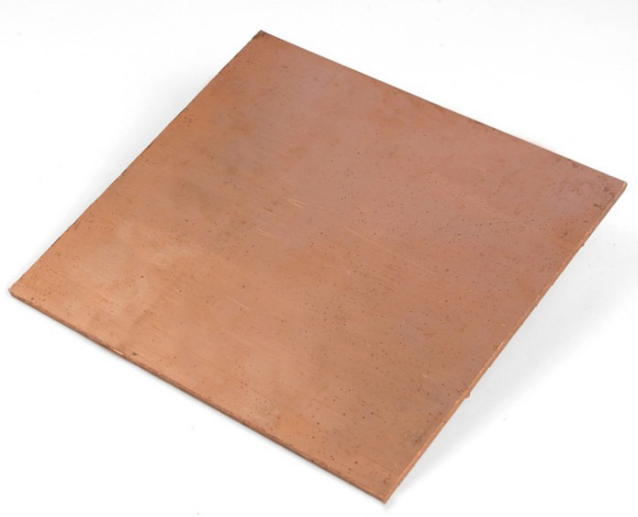
thickness
0.01/
0.02mm
0.03/
0.05mm
0.08/
0.1mm
0.2/
0.3mm
0.4/
0.5mm
0.6mm
0.8mm
1.0mm
1.5mm
2.0mm
3.0mm
4.0mm
5.0mm
size:100*100mm
1.9 USD
2.0 USD
2.0 USD
2.2 USD
3 USD
4 USD
5 USD
6 USD
9 USD
14USD
18 USD
23 USD
29 USD
4N Cu Foil sample
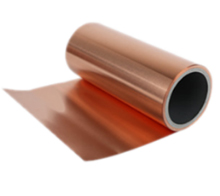
thickness
0.01/0.02mm
0.03/0.04mm
0.05/0.08mm
0.1mm
0.15mm
0.2mm
0.3mm
0.5mm
size:100mm*1m
10 USD
11 USD
11 USD
13 USD
15 USD
18 USD
27 USD
36 USD
4N Cu Wire sample
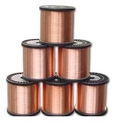
diameter
0.05mm
0.1mm
0.2mm
0.3mm
0.4mm
0.5mm
0.6mm
0.8mm
1.0mm
1.2mm
1.5mm
2.0mm
3.0mm
4.0mm
Len: 1m
0.4 USD
0.45 USD
0.5 USD
0.55USD
0.6 USD
0.65 USD
0.7USD
0.85USD
1.2 USD
1.5USD
1.9USD
2.5USD
3.3USD
5.2 USD
4N Cu stab sample
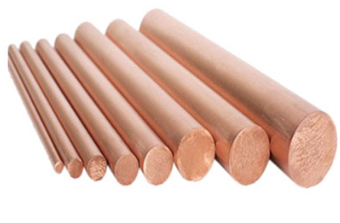
diameter
3mm
4mm
5mm
6mm
8mm
10mm
12mm
16mm
20mm
Len:100mm
1.5 USD
2.0 USD
2.5 USD
3.0 USD
4.0 USD
5.0 USD
5.5USD
8.0USD
14 USD
4N Cu Granule sample
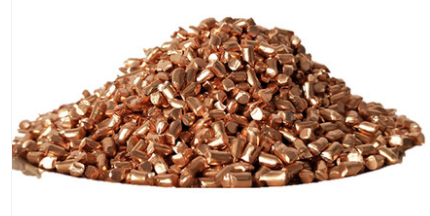
diameter
100g
500g
1000g
3*5mm
12 USD
29 USD
50 USD
If you order in large quantities, please contact with us for
price list
99.9999% (6N) Copper sample
6N Cu Wire sample

diameter
0.05mm
0.1mm
0.2mm
0.3mm
0.4mm
0.5mm
0.6mm
0.8mm
1.0mm
1.2mm
1.5mm
2.0mm
3.0mm
4.0mm
Len: 1m
2.3
USD
1.2 USD
1.5
USD
1.8
USD
2.2
USD
2.5
USD
2.8
USD
3.6
USD
4.2
USD
4.8
USD
6.0
USD
7.5
USD
12
USD
16
USD
6N Cu Granule sample
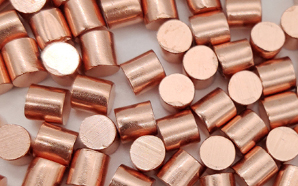
diameter
10g
1000g
6*6mm/ 3*3mm
5 USD
160 USD
If you order in large quantities, please contact with us for
price list
Copper Basics Introduction
Copper is a metallic element and a transition element with the chemical
symbol Cu and atomic number 29. pure copper is a soft metal with a
reddish-orange surface with a metallic luster when first cut, and a
purplish-red color on its own. Good ductility, high thermal and
electrical conductivity, so in the cable and electrical and electronic
components are the most commonly used materials, but also used as
construction materials, can be composed of numerous kinds of alloys.
Copper alloys have excellent mechanical properties and very low
resistivity, the most important of which are bronze and brass. In
addition, copper is a durable metal that can be recycled many times
without loss of its mechanical properties.
Copper is one of the first metals used by man. The use of copper had a
profound impact on the progress of early human civilization as early as
prehistoric times, when people began to dig open-pit copper mines and
use the obtained copper to make weapons, tools and other utensils.
Copper is a metal found in the earth's crust and in the oceans. The
content of copper in the earth's crust is about 0.01%, and in individual
copper deposits, the copper content can reach 3% to 5%. Most of the
copper in nature exists as compounds, i.e. copper ores.
Physical properties
Copper is a purplish-red lustrous metal with a density of 8.92 g/cm3.
Melting point 1083.4℃, boiling point 2567℃. It has good ductility. Good
thermal and electrical conductivity.
Magnetic properties: antimagnetic
Crystal type: face-centered cubic structure
Resistivity: 1.75×10-8 Ω-m
Speed of sound (room temperature) 3810 (m/s)
Electrolytic copper crystals (very beautiful copper crystals can be
obtained by electrolysis)
Electrolytic copper crystals (very beautiful copper crystals can be
obtained by electrolysis)(19 pictures)
Young's modulus: 110-128 GPa
Shear modulus: 48 GPa
Poisson's ratio: 0.34
Mohs hardness: 3.0
Vickers hardness: 343-369 MPa
Brinell hardness: 235-878 MPa
Solid density 8.960 g/cm^3
molten liquid density 8.920 g/cm^3
Specific heat capacity: 24.440 J/(mol-K)
Heat of vaporization: 300.4kJ/mol
Heat of melting: 13.26kJ/mol
Thermal conductivity: 401 W/m.K
Coefficient of expansion: (25 °C) 16.5 um/m-K
Chemical valence usually +2, but also +1 (3 valent copper occurs only in
a few unstable compounds, e.g. potassium copperate KCuO2)
Content in the earth's crust (ppm): 50
Content in the sun (ppm): 0.7
Ionization energy: 7.726 eV
Flame color : green
Application
Copper is a non-ferrous metal with very close relationship with human
beings, is widely used in electrical, light industry, machinery
manufacturing, construction industry, national defense industry and
other fields, second only to aluminum in the consumption of non-ferrous
metal materials.
Electrical and electronic market
The electrical and electronic markets account for about 28% of the
total. in 1997, these two markets became the second largest end-users of
copper consumption, with a 25% market share.
Transportation Equipment
Transportation equipment is the third largest market for copper,
accounting for about 13% of the total, essentially the same as in the
1960s. While the importance of transportation has not changed, the form
in which copper is used has changed significantly. For many years,
automatic radiators were the most important end user in this area;
however, copper use in automatic appliances and electronics has
skyrocketed, while use in the heat exchanger market has declined.
Industrial machinery and equipment
Industrial machinery and equipment is another major application market
where copper tends to have a relatively long service life. Coins and
munitions are the main end users in this area.
In the manufacture of machinery and transport vehicles, it is used in
the manufacture of industrial valves and fittings, instruments, slide
bearings, molds, heat exchangers and pumps.
In the chemical industry it is widely used in the manufacture of
vacuums, distillation pots, brewing pots, etc.
In the defense industry, it is used to manufacture bullets, shells, gun
parts, etc. For every 3 million rounds of bullets produced, 13-14 tons
of copper are needed.
In the construction industry, it is used for various pipes, pipe
fittings, decorative devices, etc.
Medicine
The antiseptic effect of copper has been known in medicine for a long
time. Since the 1950s, copper has also been found to have very good
medical uses. Later, Mexican scientists also discovered that copper has
anti-cancer properties.
Organic chemistry
In organic chemistry, organocopper-lithium compounds are an important
class of metal-organic compounds.
Alloys
While copper can be used to make a variety of alloys, the important
alloys of copper are as follows.
(1) Brass: Brass is an alloy of copper and zinc, named because of its
yellow color. Brass has good mechanical properties and wear resistance,
and can be used in the manufacture of precision instruments, parts of
ships, shells for guns, etc. Brass knock up sound good, so gongs,
cymbals, bells, horns and other musical instruments are made of brass.
(2) nautical brass: copper and zinc, tin alloy, resistant to seawater
erosion, can be used to make parts of the ship, balancing device.
(3) bronze: copper and tin alloy called bronze, because of the green
color and named. In ancient times, it was a common alloy. Bronze
generally has good corrosion resistance, wear resistance, castability
and excellent mechanical properties. It is used in the manufacture of
precision bearings, high-pressure bearings, mechanical parts for ships
that resist corrosion by seawater, and various plates, tubes, and rods.
Bronze also has a perverse characteristic - "heat shrinkage and cold
expansion".
(4) phosphor bronze: copper and tin, phosphorus alloy, hard, can be made
of spring.
(5) white copper: white copper is an alloy of copper and nickel, its
color and silver, silver shiny, not easy to rust. Commonly used in the
manufacture of coins, electrical appliances, instruments and decorative
items
High purity copper refers to the purity of copper metal above 4N (Cu
≥ 99.99%) (N means the purity of copper, the larger the number in front
of N the higher the purity of copper), high purity copper as an emerging
material, in addition to the preparation of high-purity analysis of
standard test materials, electronic industry, a variety of connection
lines, electronic packaging with bonding wire, high-quality audio lines,
integrated circuits, liquid crystal displays, sputtering targets and ion
coating and other high technology It is also an indispensable and
valuable material for the atomic energy, rocket, missile, aviation,
spaceflight and metallurgical industry.
High purity copper is mainly prepared by electrolytic refining method,
zone melting refining method and anion exchange method. Our company can
provide 4N-6N high purity copper, which can be processed into targets,
granules, rods, foils, sheets and other shapes, widely used in
high-purity alloy melting, crystal growth, vacuum coating and other
fields.
High pure 4N-6N
Copper sample specification and price
99.99% (4N) Copper sample
4N Cu sheet sample
 |
thickness | 0.01/ 0.02mm |
0.03/ 0.05mm |
0.08/ 0.1mm |
0.2/ 0.3mm |
0.4/ 0.5mm |
0.6mm | 0.8mm | 1.0mm | 1.5mm | 2.0mm | 3.0mm | 4.0mm | 5.0mm |
| size:100*100mm | 1.9 USD | 2.0 USD | 2.0 USD | 2.2 USD | 3 USD | 4 USD | 5 USD | 6 USD | 9 USD | 14USD | 18 USD | 23 USD | 29 USD |
4N Cu Foil sample
 |
thickness | 0.01/0.02mm | 0.03/0.04mm | 0.05/0.08mm | 0.1mm | 0.15mm | 0.2mm | 0.3mm | 0.5mm |
| size:100mm*1m | 10 USD | 11 USD | 11 USD | 13 USD | 15 USD | 18 USD | 27 USD | 36 USD |
4N Cu Wire sample
 |
diameter | 0.05mm | 0.1mm | 0.2mm | 0.3mm | 0.4mm | 0.5mm | 0.6mm | 0.8mm | 1.0mm | 1.2mm | 1.5mm | 2.0mm | 3.0mm | 4.0mm |
| Len: 1m | 0.4 USD | 0.45 USD | 0.5 USD | 0.55USD | 0.6 USD | 0.65 USD | 0.7USD | 0.85USD | 1.2 USD | 1.5USD | 1.9USD | 2.5USD | 3.3USD | 5.2 USD |
4N Cu stab sample
 |
diameter | 3mm | 4mm | 5mm | 6mm | 8mm | 10mm | 12mm | 16mm | 20mm |
| Len:100mm | 1.5 USD | 2.0 USD | 2.5 USD | 3.0 USD | 4.0 USD | 5.0 USD | 5.5USD | 8.0USD | 14 USD |
4N Cu Granule sample
 |
diameter | 100g | 500g | 1000g |
| 3*5mm | 12 USD | 29 USD | 50 USD |
If you order in large quantities, please contact with us for
price list
99.9999% (6N) Copper sample
6N Cu Wire sample
 |
diameter | 0.05mm | 0.1mm | 0.2mm | 0.3mm | 0.4mm | 0.5mm | 0.6mm | 0.8mm | 1.0mm | 1.2mm | 1.5mm | 2.0mm | 3.0mm | 4.0mm |
| Len: 1m | 2.3 USD |
1.2 USD | 1.5 USD |
1.8 USD |
2.2 USD |
2.5 USD |
2.8 USD |
3.6 USD |
4.2 USD |
4.8 USD |
6.0 USD |
7.5 USD |
12 USD |
16 USD |
6N Cu Granule sample
 |
diameter | 10g | 1000g |
| 6*6mm/ 3*3mm | 5 USD | 160 USD |
If you order in large quantities, please contact with us for
price list
Copper Basics Introduction
Copper is a metallic element and a transition element with the chemical
symbol Cu and atomic number 29. pure copper is a soft metal with a
reddish-orange surface with a metallic luster when first cut, and a
purplish-red color on its own. Good ductility, high thermal and
electrical conductivity, so in the cable and electrical and electronic
components are the most commonly used materials, but also used as
construction materials, can be composed of numerous kinds of alloys.
Copper alloys have excellent mechanical properties and very low
resistivity, the most important of which are bronze and brass. In
addition, copper is a durable metal that can be recycled many times
without loss of its mechanical properties.
Copper is one of the first metals used by man. The use of copper had a
profound impact on the progress of early human civilization as early as
prehistoric times, when people began to dig open-pit copper mines and
use the obtained copper to make weapons, tools and other utensils.
Copper is a metal found in the earth's crust and in the oceans. The
content of copper in the earth's crust is about 0.01%, and in individual
copper deposits, the copper content can reach 3% to 5%. Most of the
copper in nature exists as compounds, i.e. copper ores.
Physical properties
Copper is a purplish-red lustrous metal with a density of 8.92 g/cm3.
Melting point 1083.4℃, boiling point 2567℃. It has good ductility. Good
thermal and electrical conductivity.
Magnetic properties: antimagnetic
Crystal type: face-centered cubic structure
Resistivity: 1.75×10-8 Ω-m
Speed of sound (room temperature) 3810 (m/s)
Electrolytic copper crystals (very beautiful copper crystals can be
obtained by electrolysis)
Electrolytic copper crystals (very beautiful copper crystals can be
obtained by electrolysis)(19 pictures)
Young's modulus: 110-128 GPa
Shear modulus: 48 GPa
Poisson's ratio: 0.34
Mohs hardness: 3.0
Vickers hardness: 343-369 MPa
Brinell hardness: 235-878 MPa
Solid density 8.960 g/cm^3
molten liquid density 8.920 g/cm^3
Specific heat capacity: 24.440 J/(mol-K)
Heat of vaporization: 300.4kJ/mol
Heat of melting: 13.26kJ/mol
Thermal conductivity: 401 W/m.K
Coefficient of expansion: (25 °C) 16.5 um/m-K
Chemical valence usually +2, but also +1 (3 valent copper occurs only in
a few unstable compounds, e.g. potassium copperate KCuO2)
Content in the earth's crust (ppm): 50
Content in the sun (ppm): 0.7
Ionization energy: 7.726 eV
Flame color : green
Application
Copper is a non-ferrous metal with very close relationship with human
beings, is widely used in electrical, light industry, machinery
manufacturing, construction industry, national defense industry and
other fields, second only to aluminum in the consumption of non-ferrous
metal materials.
Electrical and electronic market
The electrical and electronic markets account for about 28% of the
total. in 1997, these two markets became the second largest end-users of
copper consumption, with a 25% market share.
Transportation Equipment
Transportation equipment is the third largest market for copper,
accounting for about 13% of the total, essentially the same as in the
1960s. While the importance of transportation has not changed, the form
in which copper is used has changed significantly. For many years,
automatic radiators were the most important end user in this area;
however, copper use in automatic appliances and electronics has
skyrocketed, while use in the heat exchanger market has declined.
Industrial machinery and equipment
Industrial machinery and equipment is another major application market
where copper tends to have a relatively long service life. Coins and
munitions are the main end users in this area.
In the manufacture of machinery and transport vehicles, it is used in
the manufacture of industrial valves and fittings, instruments, slide
bearings, molds, heat exchangers and pumps.
In the chemical industry it is widely used in the manufacture of
vacuums, distillation pots, brewing pots, etc.
In the defense industry, it is used to manufacture bullets, shells, gun
parts, etc. For every 3 million rounds of bullets produced, 13-14 tons
of copper are needed.
In the construction industry, it is used for various pipes, pipe
fittings, decorative devices, etc.
Medicine
The antiseptic effect of copper has been known in medicine for a long
time. Since the 1950s, copper has also been found to have very good
medical uses. Later, Mexican scientists also discovered that copper has
anti-cancer properties.
Organic chemistry
In organic chemistry, organocopper-lithium compounds are an important
class of metal-organic compounds.
Alloys
While copper can be used to make a variety of alloys, the important
alloys of copper are as follows.
(1) Brass: Brass is an alloy of copper and zinc, named because of its
yellow color. Brass has good mechanical properties and wear resistance,
and can be used in the manufacture of precision instruments, parts of
ships, shells for guns, etc. Brass knock up sound good, so gongs,
cymbals, bells, horns and other musical instruments are made of brass.
(2) nautical brass: copper and zinc, tin alloy, resistant to seawater
erosion, can be used to make parts of the ship, balancing device.
(3) bronze: copper and tin alloy called bronze, because of the green
color and named. In ancient times, it was a common alloy. Bronze
generally has good corrosion resistance, wear resistance, castability
and excellent mechanical properties. It is used in the manufacture of
precision bearings, high-pressure bearings, mechanical parts for ships
that resist corrosion by seawater, and various plates, tubes, and rods.
Bronze also has a perverse characteristic - "heat shrinkage and cold
expansion".
(4) phosphor bronze: copper and tin, phosphorus alloy, hard, can be made
of spring.
(5) white copper: white copper is an alloy of copper and nickel, its
color and silver, silver shiny, not easy to rust. Commonly used in the
manufacture of coins, electrical appliances, instruments and decorative
items
